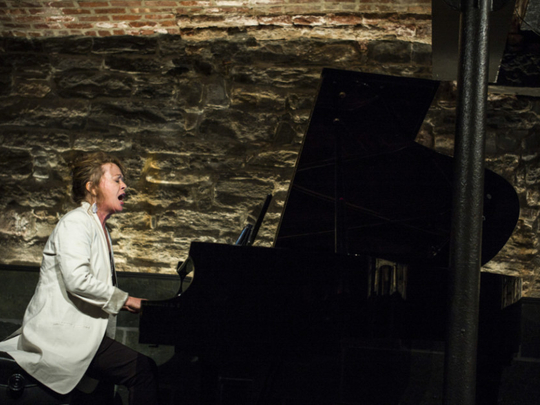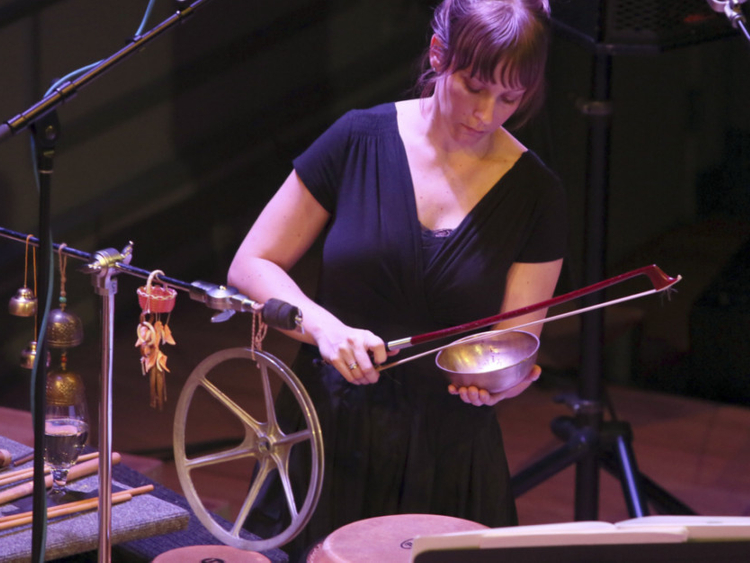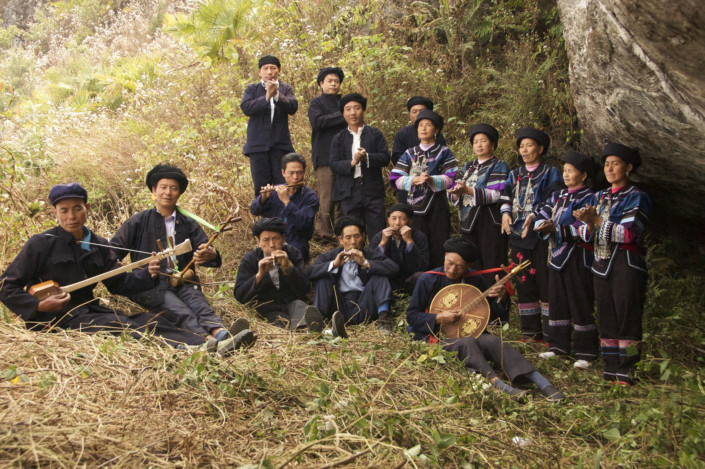
The Unesco Atlas of the World’s Languages in Danger is a melancholy document, charting the 3,000 or so languages that experts predict will vanish by the end of this century. For the most part, ethnographers and linguists are helpless in the face of the gradual erasure of collective memory that goes along with this loss of linguistic diversity.
Time to call in the composers?
A growing number of them are turning their attention to languages that are extinct, endangered or particular to tiny groups of speakers in far-flung places with the aim of weaving these enigmatic utterances into musical works that celebrate, memorialise or mourn the languages and the cultures that gave birth to them. On April 9, at the Cologne Opera in Germany, Australian composer Liza Lim unveiled her opera “Tree of Codes”, which includes snippets of a Turkish whistling language from a small mountain village. On her most recent album, “The Stone People”, pianist Lisa Moore sings and plays Martin Bresnick’s hypnotic “Ishi’s Song”, a setting of a chant by the last member of the Yahi, who died in 1916.
In February the New York Philharmonic performed Tan Dun’s multimedia symphony “Nu Shu”, the result of the composer’s research into a language and writing system that was passed down among the female inhabitants of a small village in Hunan province in China for 700 years. Other composers who have done their own fieldwork include Vivian Fung, who investigated minority cultures in the Chinese province of Yunnan, and Kevin James, who sought out some of the last native speakers of minority languages in the Pacific Northwest, Australia and Japan.
The aesthetic uses to which the composers put these rare languages vary. Still, James, the founder of the Vanishing Languages Project, seemed to speak for most when, in a recent interview, he said that the goal was “not to set them to music, but set them as music”.
It’s an important distinction. Classical music has proved adept at preserving a language such as Latin through liturgical settings that expose listeners to a language they no longer encounter in spoken form. But works such as Mozart’s “Requiem” or Orff’s “Carmina Burana”, with its sections in Middle High German, sprang from the same cultural soil that gave birth to their texts. By contrast, when composers reach for words that are unintelligible to all but a handful of speakers on the planet, the very notion of music as a vessel for semantic content is upended. Removed from all context and understanding, speech — a constellation of rhythm and melody, resonant vowels and percussive consonants — begins to resemble music.
In a phone interview, Lim said that what drew her to out-of-the-way languages in her coming opera and in her dazzlingly polyglot “Mother Tongue” (2005) for soprano and ensemble was “not so much ‘Oh, here’s a cool language’.”
Rather, she said, different languages open up new ways of thinking about the human body as a “total mechanism” for vocal expression, “running the whole range from really guttural sounds and breaths through resonant tones, all as a really powerful communicative vehicle that allows us to travel through emotional and psychological states”.
A whistling language like that quoted in “Tree of Codes”, she said, speaks to “how we humans adapt to and interact with our environment, not being separate, but really being in a merged relationship with everything around us”.
That positive attitude sets Lim apart from some of the other musical-linguistic ventures. Most are marked by a sense of loss and melancholy. A work such as James’ “Counting in Quileute”, which blends his own field recordings of the last native speakers of an American-Indian language from western Washington state is like a time capsule shot into space — except the meaning was already opaque at the time of its sealing.
At a performance of “Counting in Quileute” in 2013 at Roulette in Brooklyn, a set of speakers encircling the audience created an immersive and disorienting experience as torrents of foreign words washed over listeners and merged with breathy and brittle sounds created live by an instrumental ensemble.
The millennial gloom hovering over such a project is surely no accident. This fascination with the death throes of minority languages in remote regions seems linked to a wider contemporary anxiety over the degradation of the environment. The wane of linguistic diversity is the cultural equivalent of the loss of ecological diversity and, as such, a natural source of inspiration.
In a phone interview, Bresnick said it was a television documentary about Ishi, the last member of the Yahi tribe, that inspired his work for piano and voice. He said he related the story to his mother, a fluent Yiddish speaker, who was then 94 years old. “I told her, ‘You’re my Ishi, you’re the last to speak this language,’” he said. “She pointedly looked at me and said: ‘No, you are. Because you still care to know.’”
His setting begins with the pianist’s simultaneously singing and playing the song, which starts out sounding sunny, and naive. As the voice drops away and the piano continues to reiterate the melody, it takes on an increasingly forlorn and alien feel, the husk of a tune that has long since lost its meaning.
When James flew to Washington to conduct field research on the Quileute language, he was immediately confronted with its extreme fragility.
“The day I arrived, the best speaker was airlifted and taken to hospital,” he recalled. “And the population of native speakers went four to three. The next-best speaker had dementia. And the remaining two were old women who had grown up at a time when they were punished for speaking the language.”
Tan similarly found himself working against the clock when he set out to investigate Nu Shu culture at the prodding of his father who, as a native of Hunan had heard about this centuries-old women’s language. Some of the remaining speakers were over 100 but in no hurry to let a New York-based composer in on their secret.
When Fung, a Canadian, travelled through rural southwestern China in 2012 to study the music and language of several mountain tribes, she enlisted the help of a guide who helped her gain access to the homes of villagers where she might be regaled with drinking songs and other impromptu performances after dinner.
“A lot of them were shy,” she recalled in a phone interview, “and you’d have to have a meal with them, and drink some moonshine.”
That sort of hands-on field work makes Tan, Fung and James the heirs to Bela Bartok, who travelled the countryside of his native Hungary with an unwieldy Edison phonograph to record and transcribe regional folk songs: the beginning of ethnomusicology. Ethnolinguistics can seem like a natural extension: the last vestiges of some minority languages are preserved as song, and a musical ear can be an advantage in studying the kind of tonal languages prevalent in parts of Asia.
But some professional linguists are watching with unease as artists, journalists and other amateur researchers enter their field.
“A lot of people think they can do linguistics,” said Gregory D.S. Anderson, the director of the Living Tongues Institute for Endangered Languages in Salem, Oregon. “A lot of good-intentioned people can wreak a lot of havoc when you work with these communities that are doubly marginalised and disenfranchised.”
Among his concerns are ethical questions of outsiders’ drawing financial benefit or prestige from such expeditions, or using the recorded voices of the dead in cultures where that is taboo. James said he explained his intentions in conversations with members of the Quileute tribal council, making sure to “convince them that this use was a meaningful use of the voices of their ancestors”.
Fung described the process by which the material she gathered on her travels was translated into music as one of filtering and sublimation. She said she was particularly interested in the wide melodic leaps and in a certain shrill and nasal vocal tone she encountered in the speech and songs she studied. Now she’s looking for ways to translate some of these qualities into instrumental chamber music.
“I don’t want to just state a song,” she said. “It’s about finding the parts of the research that speak to me — for example those wide leaps — and filtering it so it becomes mine.”
Tan, meanwhile, embedded his films of Nu Shu singing into a shimmering orchestral score that features an unusually muscular and assertive solo harp part.
“I believe that if a tradition is vanishing something else has to take its place,” he said. “If something is dying there must be a way to incarnate it into something new.”
–New York Times News Service













